Japanese American History from Early Immigration to Present Time
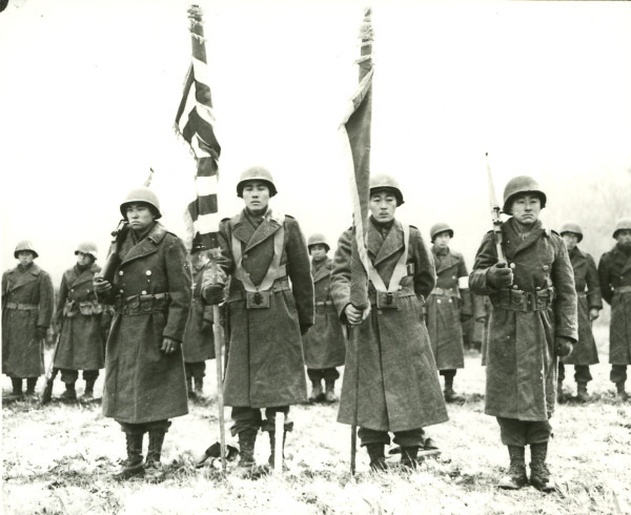
|
||
| Licensing | ||
This collection provides a general overview of Japanese American History discussing some of the most significant and influential events that took place from the mid 1800's to the present.
Some of the images in this album are from the National Archive and can be found at the following website:
http://www.archives.gov/research/arc/
Slides in this album |
|
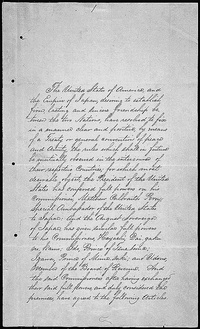
|
Immigration: Early Visitors1841- Fourteen-year old Japanese fisherman, Manjiro Nakahama, was shipwrecked and rescued by an American whaler ship and ends up in Bedford, Massachusetts. Nakahama is considered one of the first visitors to the United States, and also the first Japanese to speak English effectively. Eventually he returned to Japan in 1852 … This item is based on another item which has been withdrawn by its contributor. |
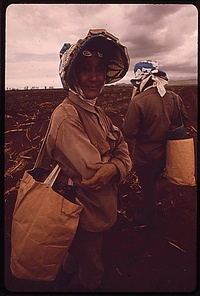
|
Immigration: Japanese Arrival in Hawaii1868- First group of contract laborers (141 men, 6 men, 2 children) arrive in Hawaii, these people are known as the Gannen-mono or “first year people”. Many of these Japanese who came to Hawaii were farmers and peasants from southern Japan, having suffered a series of crop failures at home, … This item is based on another item which has been withdrawn by its contributor. |
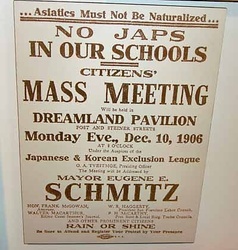
|
Immigration: Early Life in America/Discriminatory Laws1905- The Japanese and Korean Exclusion League was established. The league created 4 policies in which they would follow:
Anti-Japanese |
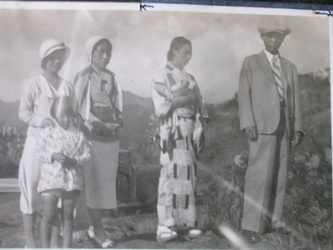
|
Immigration: The Picture Bride Era1908-1924- After the Gentleman’s Agreement was put into action in 1907, Male laborers found it difficult to find wives, therefore the Picture Bride practice became a popular way in which a male laborer was able to marry, and a Japanese women would be able to immigrate to America. First, a …
Picture Bride 1932 |
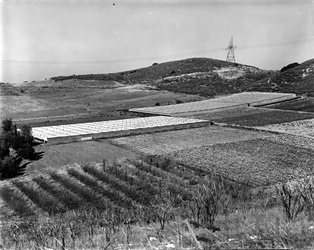
|
Alien Land Laws/Immigration Act1913- Alien Land Laws were enacted by various western states that prevented Japanese (and other Asian) immigrants from purchasing agricultural land. First enacted in the 1910s, the laws generally remained in effect until after World War II. California was the first state to enact an Alien Land Law in 1913 …
Aerial View of Kawakami Family Ranch |
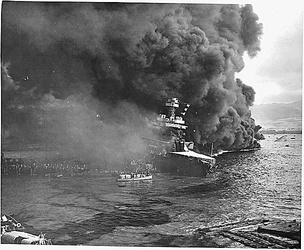
|
World War II- the BeginningPre WWII- Authorized by a blanket Presidential warrant, the government created a list known as the “ABC” list that classified potential “enemy aliens” into three categories:
Attack on Pearl Harbor, Hawaii |
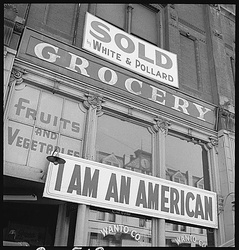
|
Executive/Exclusion/Evacuation OrdersFebruary 19th 1942- Presidential Executive Order 9066 was issued by U.S. President Franklin D. Roosevelt to send all Japanese and Japanese Americans to internment (concentration) camps. This order authorized the Secretary of War and U.S. armed forces commanders to declare areas of the United States as military areas "from which …
Sold the store, following evacuation orders, Oakland, CA |

|
Incarceration: Assembly CentersApril 9th 1942- Wartime Civilian Control Agency (WCCA) was established by the military to coordinate the evacuation to inland relocation centers. However, the relocation centers were far from ready for large influxes of people, and since the Japanese Americans living in the restricted zone were considered too dangerous to freely …
Santa Anita Guards- National Archive Item |
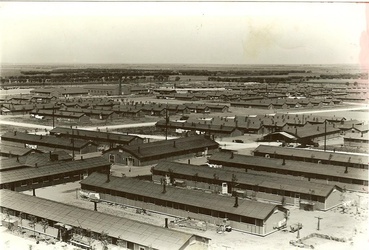
|
Incarceration: Department of Justice (DOJ) and War Relocation Authority (WRA) CampsApril-May 1942- Beginning in early April, the Immigration and Naturalization Service rounded up those Latin Americans who were of Japanese descent and transported them to American internment camps run by the Department of Justice. There were 27 U.S. Department of Justice Camps, eight of which in Texas, Idaho, North Dakota, …
Amache buildings |

|
Loyalty Questions and Heart Mountain Fair Play CommitteeFall, 1943- All people in camps were asked to fill out a loyalty questionnaire and based on responses to the loyalty questions, the "loyal" and "disloyal" were segregated. The "disloyal" from the various camps were sent to Tule Lake, which became a segregation center, while the "loyal" from Tule Lake … This item is based on another item which has been withdrawn by its contributor. |
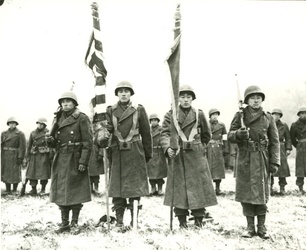
|
Japanese American Soldiers: 442nd Regimental Combat Team and 100th BattalionFebruary 1st 1943- The 442nd Regimental Combat Team, a segregated all-Nisei unit, was activated. A call for volunteers yielded vastly different results in Hawaii than on the mainland: some ten thousand Hawaii Nisei volunteered within days, while only 1,256 mainland Nisei came forward from the camps. June 12th 1943- … |

|
Japanese American Soldiers: Military Intelligence Service and other Military UnitsNovember 1st 1941- Forth Army Intelligence School opens in San Francisco, as a language school for Japanese Americans drafted into the Military Intelligence Service (MIS). About 6,000 people served in the MIS, 85% of them Nisei Japanese Americans. The majority of the Nisei served in the MIS as linguists and …
MIS GI's at Fort Snelling |
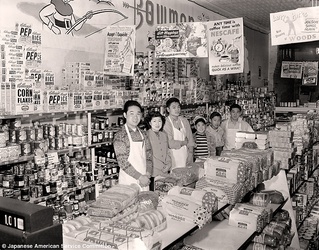
|
Post World War II: ResettlementMarch 2nd 1942- Proclamation No. 1 is issued, which designated Military Areas 1 and 2 along West Coast: California, Oregon, Washington, and Arizona December 17th 1944- Proclamation No. 21 is issued, which rescinds military mass exclusion orders, essentially authorizing the closing of camps. January 2nd 1945- Restrictions preventing resettlement of … |
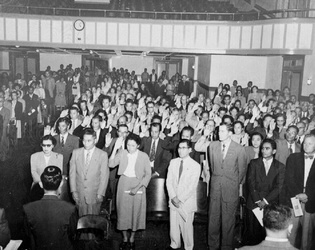
|
Post World War II: Naturalization Laws/Civil RightsJan. 19th 1948- The United States Supreme Court reverses the ruling of the California Supreme Court in the Oyama v. California case, ruling the Alien Land Law unconstitutional.
Naturalization |

|
Shaping Japanese American CommunityJapanese Communities:
Henry Sugimoto, "Self Portrait" |
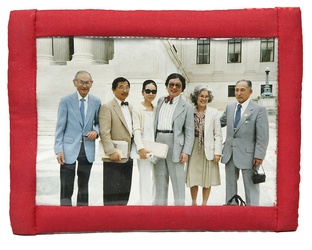
|
Japanese Americans and the U.S. Supreme CourtFour cases arose during WWII that challenged the constitutionality of curfew and exclusion orders as well as the incarceration of Japanese Americans in WRA camps. Curfew:
NCJAR Photo |

|
Asian Civil Rights Activism/RedressNovember 6th 1962- Daniel K. Inouye of Hawaii becomes the first Japanese American to be elected as a United States senator. 1960s- headed by younger Nisei Sansei Japanese Americans, a series of new Asian American organizations are established. 1968- the first Ethnic Studies program at San Francisco State …
Civil Liberties Act of 1988 - Victory! |
 editor
editor
 CSUNAsianAmericanStudies
CSUNAsianAmericanStudies
 yn
yn
 mhomma
mhomma
 Japanese American History from Early Immigration to Present Time
Japanese American History from Early Immigration to Present Time
 Journal feed
Journal feed
